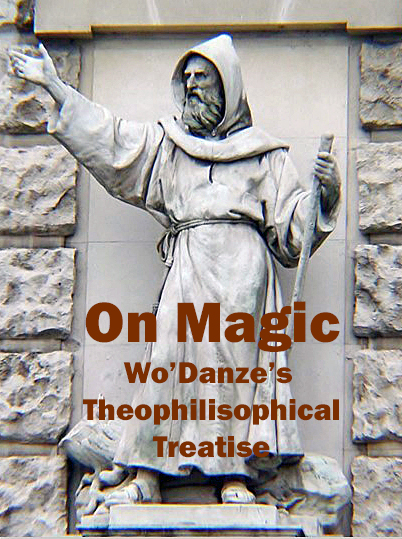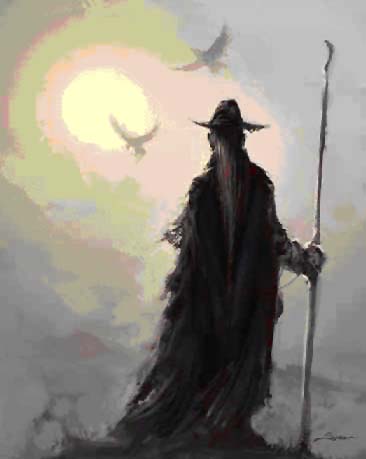History
Magic has a long and convoluted history. The first recorded magical act was Eve Kamdan’s unexpected invocation, starting her husband’s hair on fire when she caught him with another of the tribe’s women. They later burned her in punishment as an abomination, for not submitting to the will of her husband and master. The ancient history of elemental magic is very similar. For many generations, under stress and duress, nascent practitioners wildly unleash destructive forces with little control, restraint or understanding of cause and effect. Rare elemental practitioners, such as Tine Anail, a fire mage of the First Age, appear throughout prior history until Elvin kind, the true elementalists, arrive in Brieth. Since then, the art has been primarily the province of Elves and Half-Elves, but for occasional prodigies, such as Phallina Calliach, the greatest of recent memory and the current Grand Master of the Apostate Mages. Elemental magi use tools and components more than practitioners of the other domains because of the primal nature of the un-living forces released.
The first well-studied domain of the magics is Divine or White Magic. The first recorded divine magical act is attributed to Zin, the First Prophet of the Great Goddess, chroniclers record as he was wandering lost in the Roof of the World mountains, he crawled delirious and almost dying of thirst to the summit of the peak Life’s Cauldron and swore his life to the Goddess’s service if she would save him. He stood and struck his walking staff into a large bolder near the summit and an artesian spring sprang forth spilling down and creating the Water-Of-Life, a waterfall cascading down and out of the mountains to feed water to two-thirds of the continent. His disciples and followers began a written study of the divine magic of the goddess, and the subsequent priestly orders of all the gods and goddess follow their path of study, scholasticism and service.
Infernal or Dark Magic is the domain hardest to track any ancient history, as it was the latest to turn to a more structured instructional method, and to this day many adherents teach all aspects solely by word of mouth and memory. Because of contracts with demons and other infernal beings being the source of the power, and that most Dark Magic in its inherent intent is evil, necromantic or otherwise unsavory, most practitioners limit their public exposure and display of their art. The first clear historical citation of the use of Infernal Magic is the Death of Paul Rilaidir, a cousin of the first ruler to unify the continent. He fancied himself important in the consolidation of the King’s power. However, he was an arrogant, grandiose and foppish little man, with no genuine power or part of the family. He was so put out by his family’s continued disdain and contempt that to prove them wrong; he conjured what is now known to be a grade 4, Prince of Principalities, and attempted to control the being. Paul was not expecting a demon of this power and he was rapidly possessed, luckily a Deacon of the Order of Zin was present and invoked the Goddess, containing the demon, but ensuring the death of Paul. Most public knowledge of the infernal arts is of similarly spectacular failures, however the successful and unseen, subtle machicolations of dark magi are some of the most powerful and far-reaching of all magic’s.
The most complex and difficult to appreciate domains of magic is shamanism. It has complexity and subtleties beyond the light and dark arts and can create primal changes as stunning as elemental magic. However, at its most intricate, it is about the balance and imbalance of meta-spiritual forces. This notwithstanding, notable examples of shamanism in documented history are scarce. One often cited is the drought in the Westfold of the Flat Duchy in Dagadaplau. At the time in question, the Rilaidir Kings had been in power for one or two generations and a great drought struck the whole of the duchy. Crops were dying, herd and wild animals were dying, families were afraid the food supply would run out. The Duke sent for a shaman from Marshron, now part of Easoplau. Upon arriving, he went to a small grass hut on the edge of town and shut himself up inside for three days. On the fourth day, great dark storm clouds grew, and the rains came. It rained long and hard and as the day went on; it turned cold and snowed. On the fifth day, the duke went to the hut to thank the shaman for making the rain and saving the Duchy. The shaman stated he did not make the rain. When the Duke asked him what he had done, the shaman said, “I came from a place in order. When I arrived here, I noted things were chaotic and out of balance. For the last three days, I have worked on restoring myself to balance. I knew that when I could reorder myself and my home, the rains would come.”







